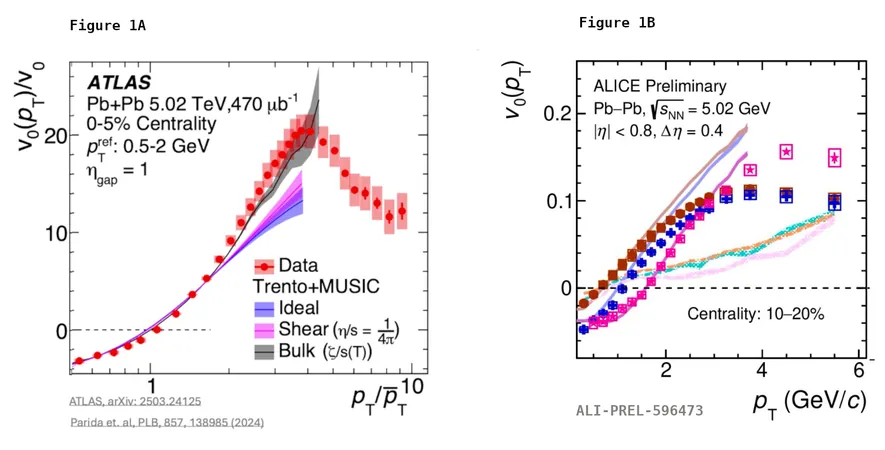
Unveiling the Mysteries of Femtoscopic Droplets at CERN
2025-05-16
Author: Rajesh
Prepare to have your mind blown! Deep within the heart of CERN's Large Hadron Collider (LHC), scientists have made groundbreaking observations about the behavior of particles colliding at nearly the speed of light. When lead atom nuclei clash, the fundamental forces come alive, resulting in an explosion of quarks and gluons—particles that constitute matter.
In these spectacular collisions, the sheer number of particles created can soar to an astonishing 100 times greater than the original count! But here's where it gets even more fascinating: these particles merge into a unique fluid state, forming what are known as femtoscopic droplets, with sizes around 10^{-14} meters. Individuality of the particles fades as they converge into a collective entity.
Why is this significant? The fluid is governed by just a few parameters, such as blistering temperatures reaching approximately 2,500 billion degrees Celsius and specific velocities. This simplicity helps researchers understand the complex behavior emerging from such immense energy.
A Game-Changing Method for Observation
In 2024, physicists at the Institut de Physique Théorique at CEA Paris Saclay introduced an innovative approach to study this "collective" behavior. Fast forward to now, two key LHC collaborations—ATLAS and ALICE—have put this method into action, sharing their thrilling results at the prestigious Quark Matter 2025 conference in Frankfurt, which brought together nearly 1,000 scientists.
The magic of this method lies in measuring tiny temperature fluctuations—about 1%—across different collision events. By establishing that particle emissions from various angles maintain a uniform temperature, the researchers have confirmed a groundbreaking hypothesis: the fluid behaves like a harmonious entity despite the chaotic nature of collisions.
Tracking Temperature and Particle Behavior
Thanks to the advanced capabilities of the ATLAS collaboration's detector, the correlations in temperature were explored in depth. Results indicated that regardless of the angle of emitted particles, the temperature remained consistent, reinforcing the theory of a uniform fluid.
Further experiments revealed intriguing changes in the "spectrum" of emitted particles linked to even subtle shifts in temperature. A warmer fluid leads to fewer slow-moving particles, making way for an increase in those zipping ahead at high speeds.
Notably, the findings align closely with theoretical hydrodynamic predictions, although the velocities of the fastest particles—a minuscule fraction created in the collision's initial moments—deviated slightly from expectations.
This remarkable research is opening new doors in our understanding of particle physics, helping scientists decode the enigmas of the universe, one collision at a time.

 Brasil (PT)
Brasil (PT)
 Canada (EN)
Canada (EN)
 Chile (ES)
Chile (ES)
 Česko (CS)
Česko (CS)
 대한민국 (KO)
대한민국 (KO)
 España (ES)
España (ES)
 France (FR)
France (FR)
 Hong Kong (EN)
Hong Kong (EN)
 Italia (IT)
Italia (IT)
 日本 (JA)
日本 (JA)
 Magyarország (HU)
Magyarország (HU)
 Norge (NO)
Norge (NO)
 Polska (PL)
Polska (PL)
 Schweiz (DE)
Schweiz (DE)
 Singapore (EN)
Singapore (EN)
 Sverige (SV)
Sverige (SV)
 Suomi (FI)
Suomi (FI)
 Türkiye (TR)
Türkiye (TR)
 الإمارات العربية المتحدة (AR)
الإمارات العربية المتحدة (AR)